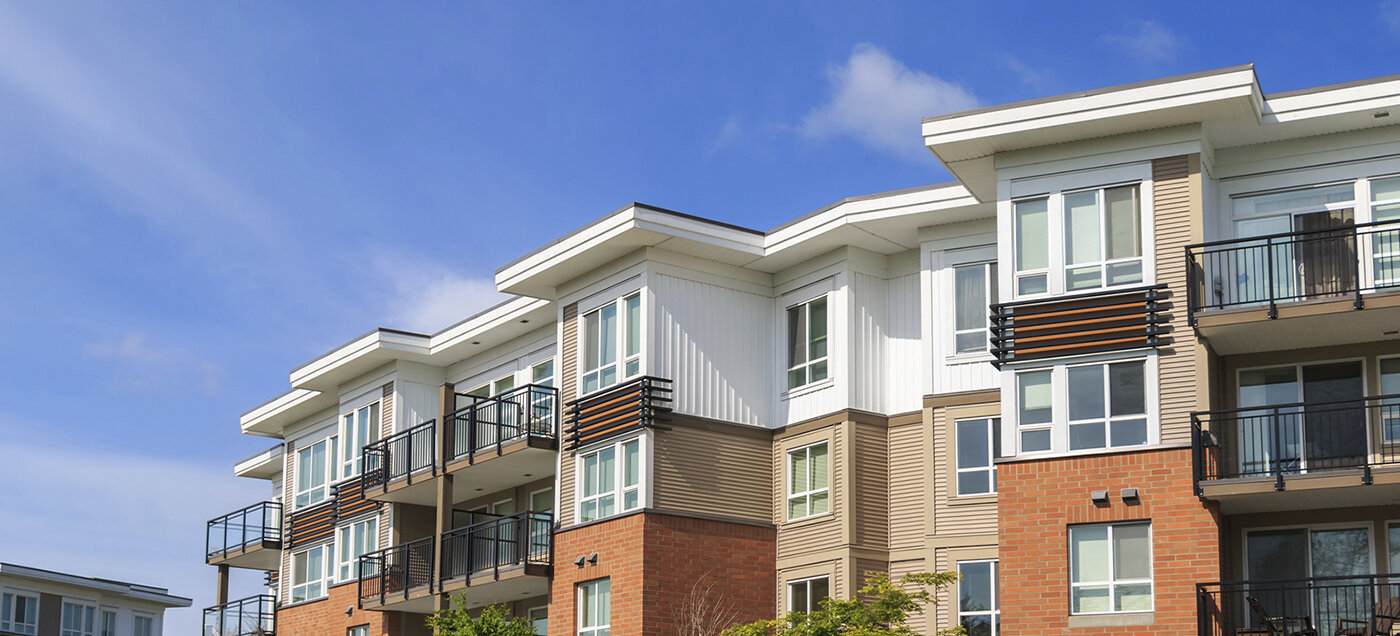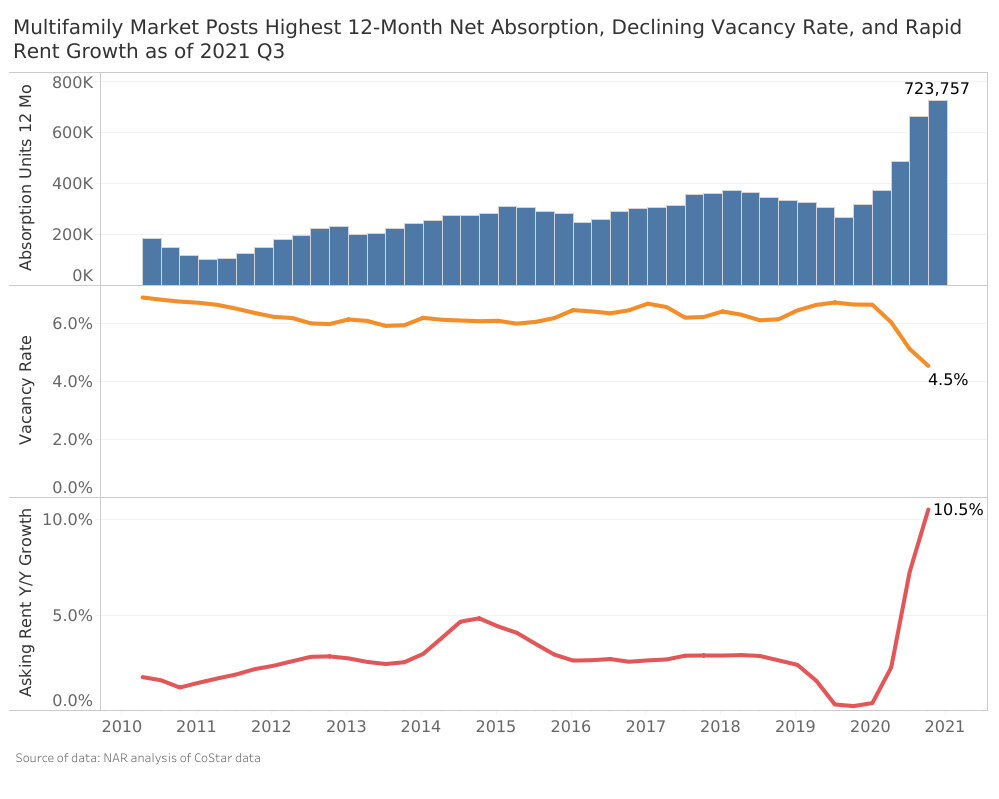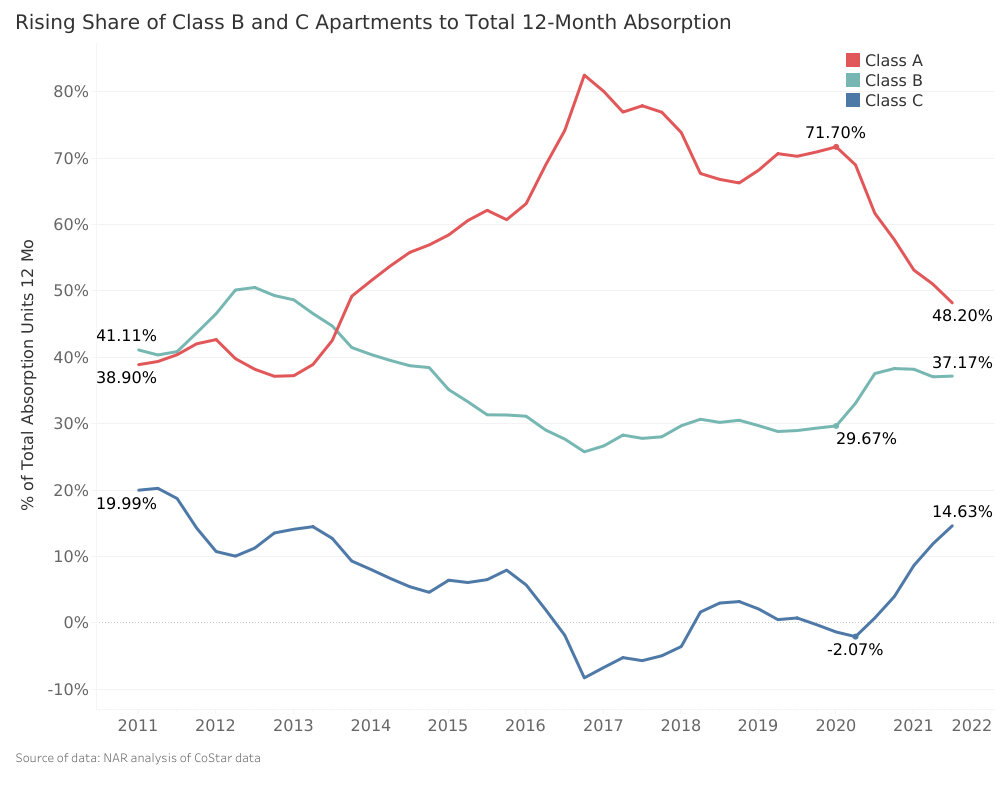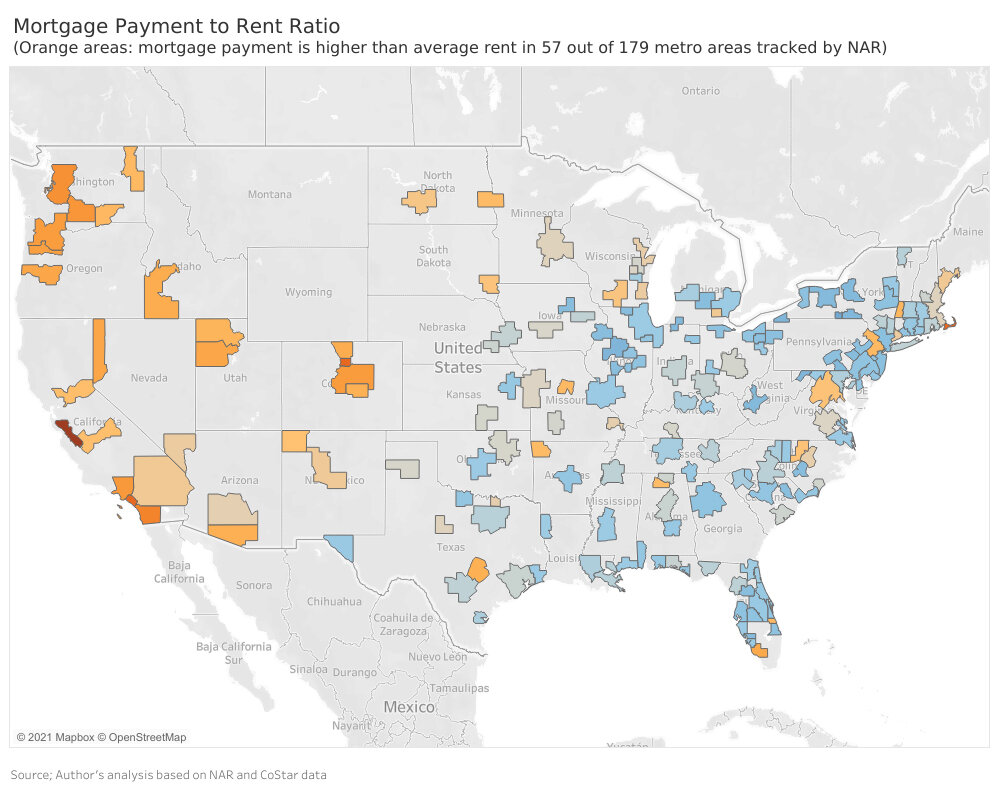Commercial Real Estate News

Renter Demand Shifts to Affordable Suburban Apartments in U.S.
Commercial News » Irvine Edition | By David Barley | October 18, 2021 7:55 AM ET
According to new research by the National Association of Realtors, U.S. apartment demand that has surged during the pandemic continued to soar to a decade-high level as of 2021 Q3, with net absorption of nearly a million units (932,910) since 2020 Q2 and nearly a quarter of a million units in the past 12 months as of 2021 Q3. The vacancy rate has fallen to a decade low of 4.5%, and the asking rent has soared to a historic high of 10.5% as well.
NAR further states that demand for apartments has soared amid strong price growth, with double-digit price growth in the median single-family existing-home sales price in the second quarter in 94% of 183 metro areas. In the western half of the country, owning has become unaffordable compared to renting. For example, in San Jose, the monthly mortgage is $6,400 which is 2.4 times the monthly rent of $2,750. Most of the affordable metro areas for owning a home are in the eastern half of the country (Midwest, South, Northeast regions).
Class A still accounted for the larger share of net new absorptions, but the share of Class A apartments within the total 12-month absorption has drastically declined since the pandemic from 72% in 2020 Q1 to 48% as of 2021 Q3. Meanwhile, the share of Class B rose from 30% to 37% over the same period, as well as the share of Class C going from negative net absorption to positive net absorption of 15%.
The current mix of apartment units under construction has also shifted towards Class B, with the share increasing to 42% as of 2021 Q3 from 36% in 2020 Q1. A total of 644,690 units are under construction, so Class B units amount to 268,748 units. This shift in construction towards Class B units will lead to a more affordable supply of new units.
Class A apartments tend to be located in the central business districts, so the declining share of Class A apartments is indicative of the shift toward suburban markets and away from the central business district with people working from home. Another reason for the rising share of Class B apartments could be the cost of rent, as Class B units are cheaper than Class A units by about $500. Renters tended to look for more affordable apartments, given the risk of unemployment during the pandemic period.
Sign Up Free | The WPJ Weekly Newsletter
Relevant real estate news.
Actionable market intelligence.
Right to your inbox every week.
Real Estate Listings Showcase
Related News Stories
Commercial Real Estate Headlines
- 2025 Prediction: U.S. Commercial Investment Recovery Expected to Gain Traction
- Holiday Retail Sales for 2024 to Hit Record $1 Trillion
- Tech, AI Industries Drive Largest Share of Office Leasing Activity in U.S.
- Commercial Real Estate Lending in U.S. Enjoys Strong Growth in Q3
- U.S. Multifamily Market Begins Recovery in Q3
- Commercial Investment in Japan Spikes 24 Percent Annually in Q3
- Despite Return-to-Office Mandates, U.S. Office Vacancies Continue to Rise
- PROPSIG Tech Startup Acquired by World Property Data
- U.S. Commercial Mortgage Debt Hits $4.7 Trillion in Q2 as Delinquencies Increase
- Hong Kong Class A Office Rents Continue to Downtick in Mid-Summer
- U.S. Office Landlords Tenant Concessions Decline for First Time in 4 Years
- U.S. Commercial Mortgage Originations Spike 27 Percent in Q2 Over Q1
- Phnom Penh's Commercial Office, Retail Markets Face Slowdowns in 2024
- Global Edge Data Center Market to Hit $300 Billion by 2026
- Commercial Property Transactions in Japan Dive 25 Percent Annually in Q2
- Delinquency Rates for U.S. Commercial Property Loans Downticks in Q2
- Megawarehouse Lease Deals in U.S. Increase in 2024
- Office Tenants' Flight to Quality Buildings Increases in 2024
- Commercial Lending in Japan Upticks 6 Percent Annually in Q1
- AI Driving Significant Global Data Center Growth in 2024
- Total U.S. Commercial Mortgage Debt Rises to $4.7 Trillion in Q1
- U.S. Commercial Mortgage Delinquencies Rise in Early 2024
- Asia Pacific Office Sector to Further Reprice Throughout 2024
- U.S. Retail Foot Traffic to Surpass Pre-Pandemic Levels by 2025
- Commercial Real Estate Lending in U.S. Slowed in First Quarter
- Japan Commercial Property Investment Volume Jumps 7 Percent in Q1
- Asia Pacific Commercial Property Investment Leads the World, Spikes 13 Percent
- Driven by High Rates, U.S. Commercial Lending Imploded 47 Percent in 2023
- After Two Year Slump, Prime Multifamily Metrics Uptick in U.S.
- Commercial Co-Broker Commissions Not Affected by NAR-DOJ Settlement, Yet
- U.S. Office Buildings with Upscale Tenant Amenities Still Enjoy Premium Rents in 2024
- U.S. Commercial, Multifamily Mortgage Delinquency Rates Uptick in Q4
- U.S. Commercial Mortgage Debt Continued to Rise in 2023, Hits $4.7 Trillion
- Nonresidential Construction Spending in the U.S. Falls Sharply in January
- U.S. Multifamily Construction Starts to Decline in 2024
- Commercial Mortgage Lending in U.S. Shows Signs of Stabilization in Late 2023
- Architecture Billings Decline in December as Soft Business Conditions Persist
- Government Sector Claimed Largest Portion of 100 Biggest U.S. Office Leases Signed in 2023
- U.S. Commercial, Multifamily Borrowing Dives 25 Percent Annually in Late 2023
- Record High Multifamily Construction Deliveries Drive Vacancy Rates Higher








